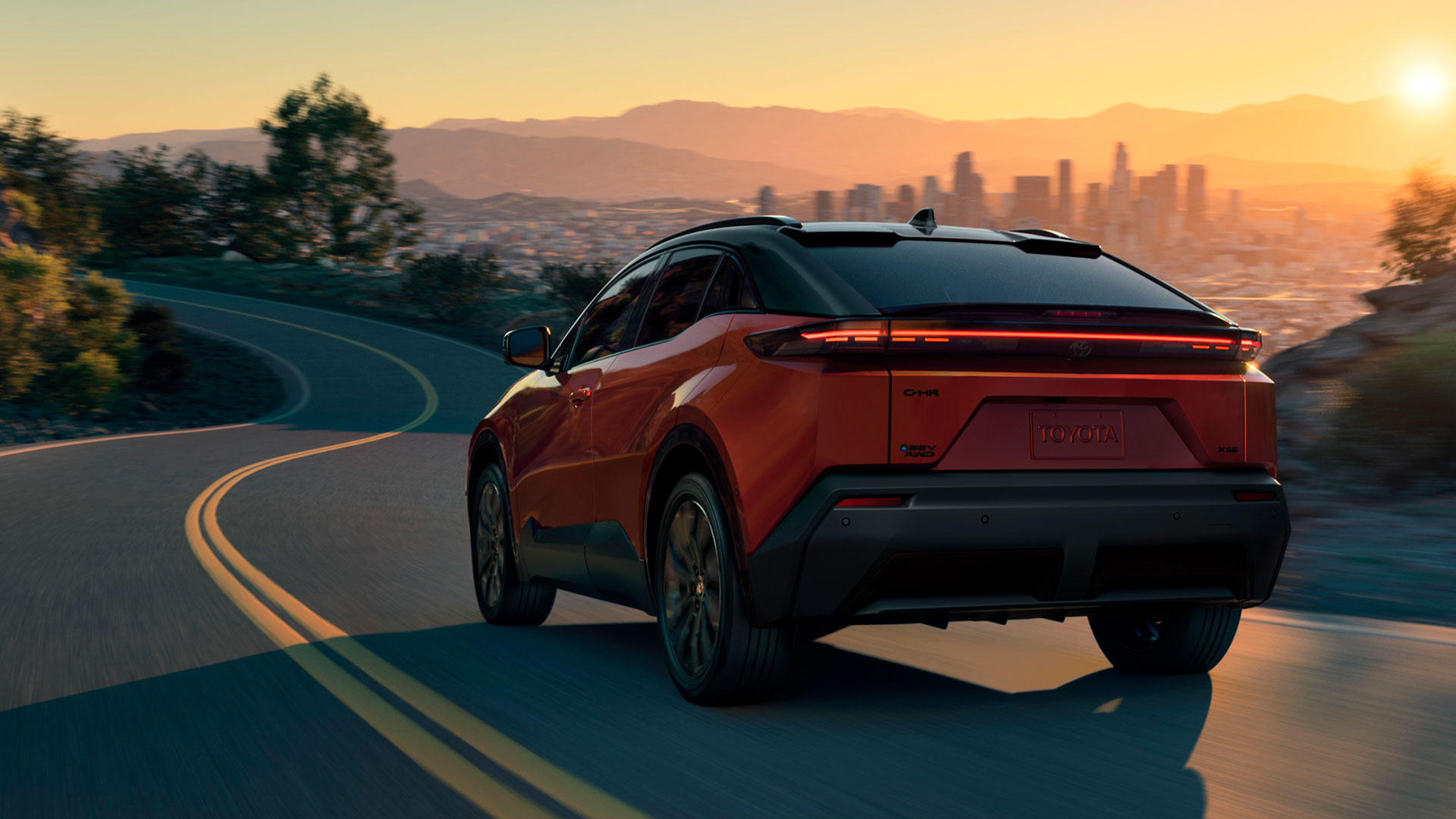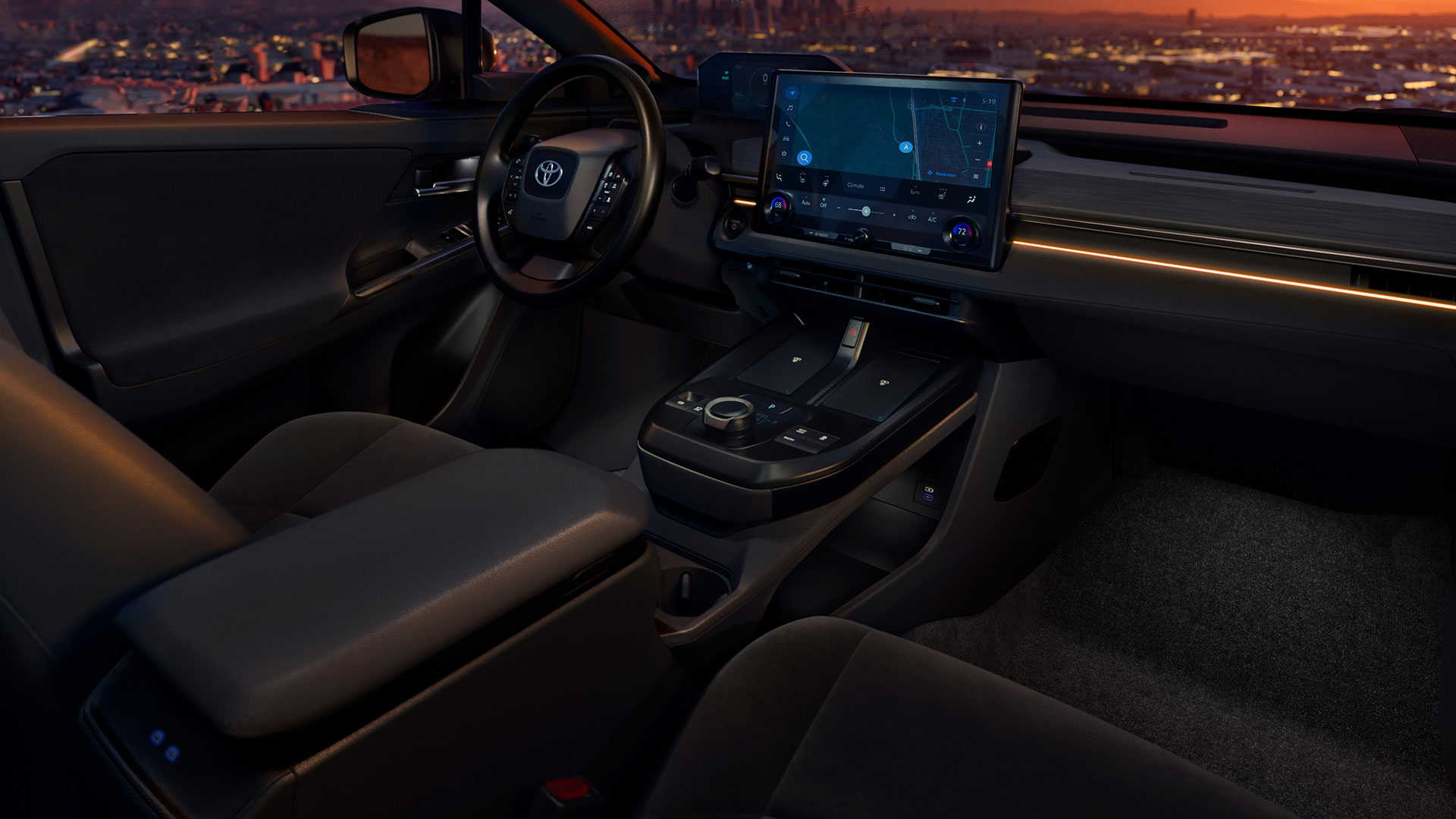Toyota today expanded its electric lineup with the all-new 2026 C-HR battery electric vehicle, a sporty compact crossover that combines coupe-inspired styling, a tech-rich interior and performance figures that rival many gas-powered rivals. Built on Toyota’s dedicated e-TNGA EV platform, the C-HR BEV features dual electric motors and standard all-wheel drive that together deliver a combined 338 horsepower and a zero to 60 miles per hour time of roughly five seconds.
Under “the hood,” the C-HR BEV is powered by a flat underfloor lithium-ion battery pack available in a larger 74.7 kWh capacity, which Toyota estimates will provide up to 290 miles of range on a single charge. An 11 kW onboard charger allows for Level 2 AC charging, while a North American Charging System port makes DC fast charging simple—Toyota says drivers can replenish the battery from 10 to 80 percent in about 30 minutes under ideal conditions. A built-in battery preconditioning feature automatically warms or cools the cells when navigating to a fast-charge station, helping maintain peak charging speeds even in cold weather.
Inside, the C-HR BEV’s cabin is designed around a slim 14-inch touchscreen that runs Toyota’s latest multimedia interface, flanked by a digital instrument cluster that can be personalized to display energy flow, navigation prompts or advanced driver-assist alerts. Dual wireless charging pads sit in the center console alongside physical controls for climate and drive mode selection. Rear passengers benefit from dedicated USB-C ports and optional rear climate controls. An available panoramic glass roof and a palette of customizable ambient lighting—offered in 64 colors—add to the premium feel.

Toyota has equipped the C-HR BEV with its Safety Sense 3.0 suite of active safety systems, which include automatic emergency braking with pedestrian and cyclist detection, adaptive cruise control with lane-centering assistance, road sign recognition and automatic high beams. Blind-spot monitoring, rear cross-traffic alert and front and rear parking sensors are standard on all trims; higher-level driver-aid features such as traffic jam assist, lane change assist and a panoramic view monitor are included on the XSE grade.
Steering-wheel paddles give drivers fingertip control over four levels of regenerative braking, turning kinetic energy back into battery charge on demand. The vehicle’s low center of gravity and reinforced chassis cross-frame contribute to agile handling, while spring and damper tuning, along with stiffer anti-roll bars, ensure a balanced ride over a variety of road surfaces. Toyota’s X-MODE grip control system is also available on AWD models, allowing low-speed crawl control and optimized traction in slippery conditions.

Cargo capacity behind the rear seats measures a usable 25.4 cubic feet, with a 60/40 split-fold rear bench expanding total volume for larger loads. A height-adjustable power liftgate, roof rails and rain-sensing wipers are standard on both SE and XSE trims, as are heated front seats and a heated steering wheel. The XSE adds synthetic-suede seat trim, driver-seat memory functions and a digital rearview mirror with HomeLink integration.
Toyota plans to begin deliveries of the C-HR BEV in late 2025, with U.S. pricing and final specifications announced closer to launch. As Toyota’s 20th electrified model, the C-HR BEV underscores the brand’s multi-pathway approach—offering customers a choice of battery electric, hybrid, plug-in hybrid and even fuel cell models to meet a wide range of needs and preferences.

